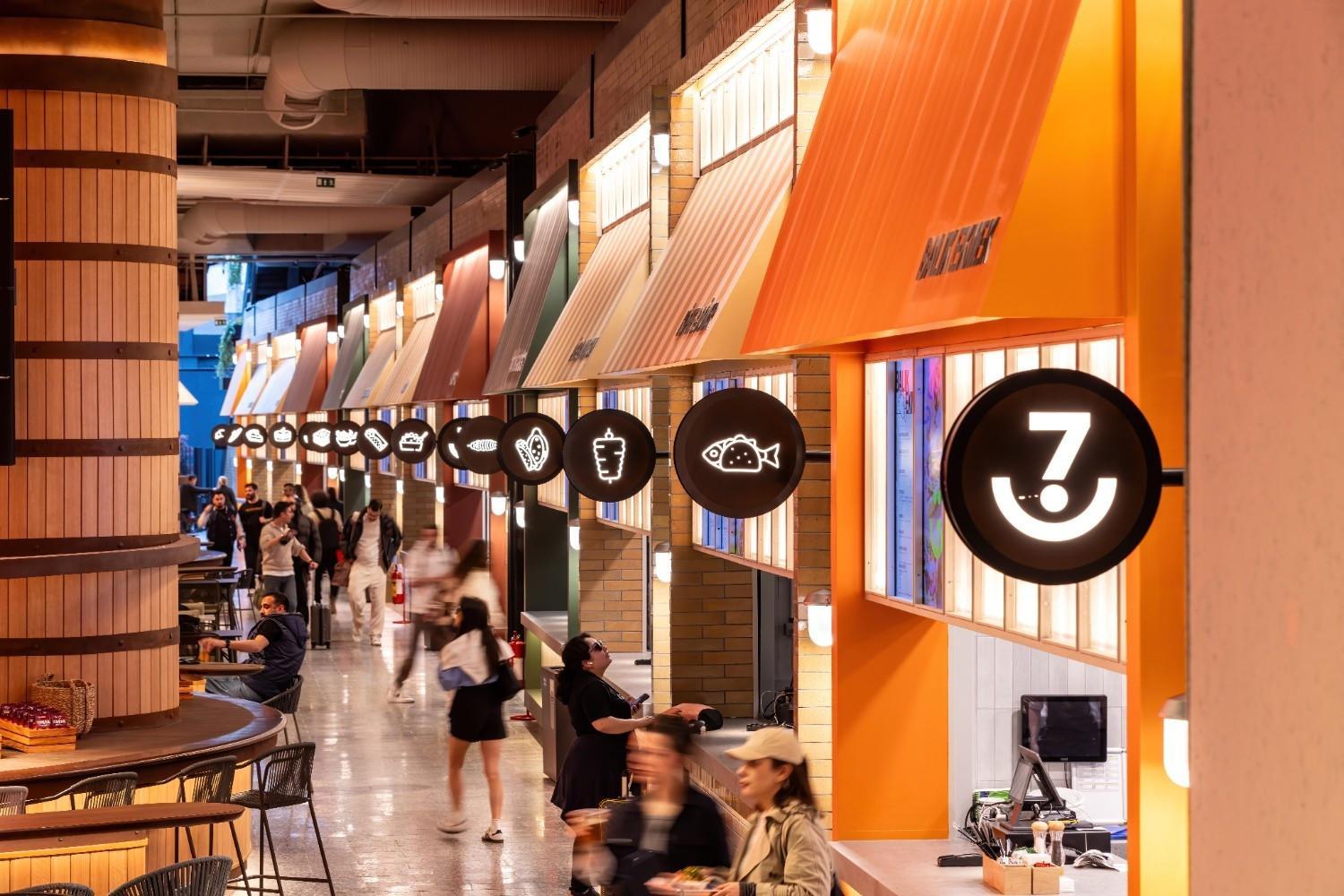
In Kadıköy, a new table has been set—one to which everyone is invited. A site that stood derelict for years is now preparing to become the new address of gastronomy, culture, and public gatherings.
When I first heard about the project, my instinctive reaction was: “madness.” Yes, sheer madness. To transform an almost derelict, neglected void of 41,700 square meters — through which nearly 120,000 people pass daily at Söğütlüçeşme — into a food, beverage and socialization hub… They could easily have taken the shortcut of filling it with chain brands guaranteed to draw crowds, then sat back comfortably. But they chose not to. Instead, they have brought together brands with a gastronomic stance and original character under a single roof.
To discuss the project in detail, I met at Terminal Kadıköy with Pelin Akın Özalp, Board Member of Akfen Holding and the driving force behind the initiative; chef Merve Kızılkayalar, who coordinates the in-house kitchen operations; and the company’s Corporate Communications Director, Ünsal Ereke. With her characteristic smile and boundless energy, Pelin Akın explained how great a source of excitement this project has been for them, emphasizing one point repeatedly: at its core, this is a social transformation project. Gastronomy, after all, is a very different realm from Akfen Holding’s core businesses. She notes politely: “It’s a sector where everyone has an opinion — which makes it far from easy.” She is right: in this country, there is no shortage of opinions about food and beverage, but when it comes to execution, many of those ideas prove unworkable.
Pelin and her father, Hamdi Akın, first dreamed of it, then lit the fuse of this social transformation. They traveled from London’s Borough Market to Berlin’s Bikini, studying both the architecture and the operational models, observing human behavior in those spaces. If you notice, in major cities around the world, such places are no longer simply about shopping or satisfying hunger; they have become stages for public life, cultural encounters and gastronomic memory. Borough Market in London, for example, has built its mission around making sustainable producers and quality ingredients visible; with its centuries-old history, it still functions as a “public kitchen.” Lisbon’s Time Out Market presents an entirely different model: curating the city’s top chefs and restaurants under one roof, filtering gastronomy through an editorial lens. Meanwhile, the hawker centers of Singapore — where I recently filmed — are listed by UNESCO as an element of Intangible Cultural Heritage: With affordable prices, master-apprentice continuity and multicultural culinary traditions, they sustain a living social bond.
These examples show that such spaces are not merely places to eat, but also sites of social justice, accessibility and cultural continuity. Rising in the heart of Söğütlüçeşme’s intense transit flow, Terminal Kadıköy must be evaluated in light of these global examples. Through a conscious departure from the original shopping mall–hotel idea, it has been reimagined as an “open-air, food-and-beverage focused” public stage. Architect Melkan Gürsel’s low-rise, transparent design — encouraging passersby to step inside — has transformed the long-neglected viaduct underside into a dynamic piece of the city, carved into 13 horizontal and one vertical street-like passages. With an investment of 70 million euros, the aim was not merely to create a gastronomy destination, but also to establish a meeting ground — right in the heart of daily life, at the crossroads of Marmaray, Metrobus and High-Speed Train.
The project has connected new arteries to Kadıköy’s already strong gastronomic ecosystem. Alongside examples that touch on local memory — such as Onur Ocakbaşı from Adana (beloved not only for its kebab but also for the joviality of its master), Afitap, a meyhane institution from Ankara, Denizli’s famed Cezayir Usta Yatık Döner, and Hebun Çorba — stands a diverse “city table.” It is enriched by concepts like Ters Köşe, Trattoria Fontana, Deli Deli, and Söğütlü Lokanta, led by chef Deniz Şahin (a story deserving an article of its own).
But what truly makes me call this project “madness” is 7DE7, located right at the center. Because here, the operations of 21 food kiosks, 2 hot beverage points, and 4 bars are run entirely in-house. What impressed me most about this MSA-consulted operation was its 530-square-meter preparation kitchen, designed as an open kitchen to serve all these kiosks. The creation of this hub involved building a network with over 250 suppliers and testing more than 400 recipes — details that strengthen the promise of standardized quality combined with a constantly renewable curation. Personally, I think hybridizing the “editorial selection” discipline of the Time Out model here with local producers and small entrepreneurs over time would be delightful. And let’s not overlook 7DE7’s ambition of hosting “the world’s largest sports bar.”
As Terminal Kadıköy opens a new page in the city’s gastronomic memory, it also brings the warmth of sharing and collective living into the very heart of the city.